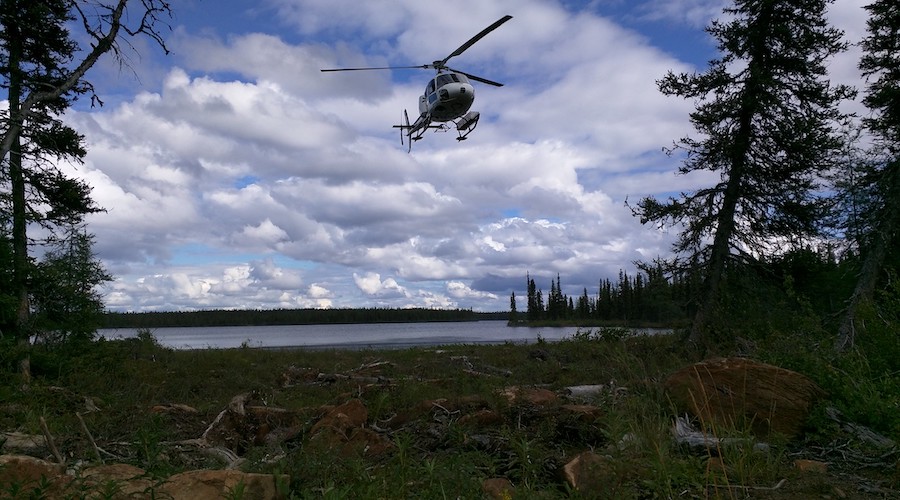Commerce Resources gets $160K in grants to back development of Ashram rare earth project

Helicopter landing at the Ashram rare earth deposit. (Image courtesy of Commerce Resources).
Canadian miner Commerce Resources (TSXV: CCE) has received C$160,000 in grant money from both government and private organizations in support of research and development of the Ashram rare earth and fluorspar deposit’s flowsheet.
Located in northern Quebec, Ashram is one of the largest rare earth deposits in the world with a fluorspar component which also ranks as one of the largest defined globally.
The research and development program focused on the project will be carried out as a collaboration between Commerce Resources, Université du Québec en Abitibi-Témiscamingue and the Industrial Waste Technology Centre.
Ashram is one of the largest rare earth deposits in the world with a fluorspar component which also ranks as one of the largest defined globally
Within this collaboration, Commerce has committed to providing approximately 1.5 tonnes of Ashram material to be used as feed for the various test programs with the goal of optimizing the flotation process to produce high-grade (>30% REO) mineral concentrate using only this method, and further demonstrate the scale-up of the process from bench to mini-pilot scale; enhancing mineral liberation by using a high-voltage electrical pulse (HVEP) fragmentation method; and evaluating wet screening as a classification approach in the grinding circuit.
“The programs that have been outlined by UQAT and CTRI have the potential to provide significant process optimizations and cost efficiencies to the Ashram project (e.g. energy reductions, improved mineral liberation and flotation performance, etc.), as well as make a strong contribution to academia and the research and development of strategic minerals in Quebec,” Chris Grove, president of the Vancouver-based mining company, said in a media statement.
Besides these grants, Commerce has received C$1 million in direct equity investment from the Quebec government, C$365,000 in funding for a parallel pilot plant program and software modelling (Universite’ Laval), and C$300,000 for tailings optimization program (INRS).




